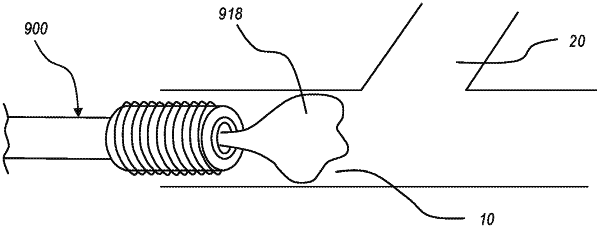| CPC A61B 17/0057 (2013.01) [A61B 17/00491 (2013.01); A61B 2017/00292 (2013.01); A61B 2017/00544 (2013.01); A61B 2017/00641 (2013.01); A61B 2017/0065 (2013.01); A61B 2017/00876 (2013.01); A61B 2017/00951 (2013.01)] | 20 Claims |

|
1. A delivery device configured for delivering a ferrofluid, the device comprising:
a catheter having a lumen extending to a distal opening at a distal end of the catheter;
a magnet coupled to the catheter at a distal section of the catheter such that the catheter is configured to deliver the ferrofluid past the magnet to a desired fluid treatment site, wherein the magnet provides a magnetic field having strength sufficient to hold a bolus of the ferrofluid at the desired treatment site; and
an ejection mechanism configured to eject the ferrofluid from the magnet, wherein the ejection mechanism is located at the distal end of the catheter.
|